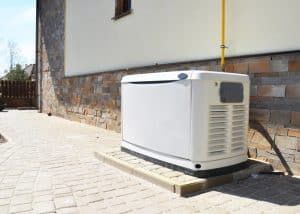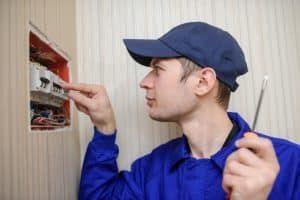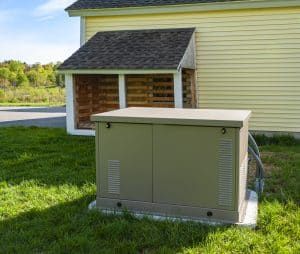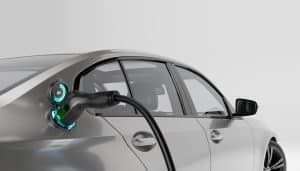Our Blog

Christmas lights are undoubtedly one of the best parts of the holiday season. However, they can sometimes be challenging to manage. Theres also the aspect of making sure theyre used safely. Keeping in mind indoor and outdoor Christmas lighting tips can help limit stressful situations while boosting the chances of establishing beautiful displays. Buy More Lights Than You Need It can be frustrating when youre on a decorating roll, only to realize your Christmas lights have run out or they dont work. Buy more Christmas lights than you need. If you require extra, you already have them on hand and won’t have to put the rest of your decorating on hold. Use Light Clips Light clips are a great way to affix strands of lights to roofs and other surfaces without damaging the decor or surfaces to which youre attaching them. Theyre easy to use and remove. However, to increase the chances of success and limit damage, read the accompanying instructions before using them. Test Lights Before Decorating Before putting up any Christmas lights, use a light tester to ensure theyre properly working. You dont want to get every strand perfectly set in place only to flip the switch and find that some bulbs or entire strands of lights dont work. Use a Light Net for Outdoor and Indoor Use Consider using Christmas light nets rather than continuously wrapping strands of lights all over your indoor Christmas tree and outdoor shrubs and trees. Using netting creates a consistent look, and it’s easy to apply. However, its important to strategically place the netting and adjust it so it stays on and the wires arent visible. Make sure the lights you choose are ideal for the purpose for which you want to use them. For example, ensure they can be used outdoors on shrubs or indoors on the Christmas tree. Use Different Light Styles Using various styles of lights can result in beautiful displays if you plan properly and check that the light styles and colors complement each other. However, the holiday season is all about joy, so whats most important is using what makes you happy. Focus on Entryways Entryways, such as the front of the home, the back entrance, and indoor doorways are ideal focal points. This is where you can use garland, string lights, and small Christmas decor items to make each one spectacular and personalized. Make Your Christmas Lights Decorating Plan A great display of Christmas lights often starts with a plan while keeping decorating tips in mind. It gives you an idea of how the lights will look so you can change up your ideas before having to switch things up after youve already put the lights in place. It will also give you an idea of how many strands of lights you need. Start establishing your plan now and buying what you need to implement it. Contact ESSCO Electric in Pasco, Washington, if you need any assistance with any indoor or outdoor lighting installation needs.

As a homeowner, the last thing you need during an emergency is a faulty generator. Fortunately, it’s possible to troubleshoot many generator issues yourself. As long as you understand the basics of common problems and their solutions, it’s possible to get a stalled generator up and running again. Here are five of the most common generator problems and ways you can troubleshoot them. 1. Failure to Start If your generator fails to start, check the fuel level to ensure there’s enough gas. Inspect the sparkplug for signs of wear or fouling, and replace it if necessary. Additionally, examine the air filter for clogs, and clean or replace it. Finally, confirm that the oil level is sufficient, as many generators have a low oil sensor that prevents them from starting if the oil is too low. 2. Overloading “Overloading” is the term for a household’s electrical needs exceeding the wattage capabilities of the generator. Symptoms of overloading include flickering lights, overheating, and strange noises coming from your generator. An overloaded generator may also trip your circuit breaker after being turned on. To counteract this, reduce the load by unplugging nonessential appliances and devices. Check the generator’s wattage capacity, and make sure it’s not being exceeded. If necessary, prioritize essential appliances, and stagger their use to prevent overloading. If your generator is frequently getting overloaded, you will probably need a second generator of the same size or an entirely new one with a higher wattage capacity. 3. Low Power Output If the generator is running, but appliances aren’t receiving sufficient power, you may have a faulty voltage regulator. This device automatically regulates how much power flows out of your generator to your home. Consult the generator manual to locate and inspect the voltage regulator. If it appears to be damaged or malfunctioning, consider replacing it. 4. Fuel System Issues A common issue is fuel system problems, such as clogged fuel lines or a dirty carburetor. Make sure the fuel valve is open, inspect the fuel lines for blockages, and clean the carburetor if needed. To help prevent this type of issue, make a habit of checking fuel levels every time you use your generator, and replace old, stale fuel regularly. 5. Unusual Noises or Vibrations Unusual noises or excessive vibrations can be signs of loose or damaged components. Check for loose bolts, nuts, or parts in the generator assembly. Tighten any loose connections, and inspect the muffler for damage. Excessive vibrations may indicate an issue with the engine, so it’s crucial to address these concerns promptly to prevent further damage. Get Professional Help Regular maintenance goes a long way toward maximizing the life and efficiency of your generator. However, if troubleshooting at home doesn’t resolve your generator issues, it’s time to seek professional assistance. Reach out to our experts at ESSCO Electric for all your generator servicing needs in the Pasco, WA area.

With as much money as you spend on an electric vehicle and a charging station, why wouldn’t you spend a little more to maintain it? The charging station ensures you always have a full battery when you need it and protects you from some of the common fire risks and other hazards you might face. Learn how often you need to schedule EV charger maintenance and what happens during your appointment. Basic Maintenance Tasks Owning an EV charger requires regular appointments to maintain it. You should never attempt to handle the maintenance yourself because you can easily make a mistake that damages your home’s electrical panel. A maintenance appointment allows a professional to check on the system’s internet connection, look for any damage, find broken parts, and recommend anything you need. Though some EV owners think they can get by without regular maintenance, even minor repairs can cost much more than you expected. Why Maintain Your Charger? As an EV owner, you will find there are several reasons to maintain your home charger. One is that it protects your investment. Not only does it protect the charger itself, but it also protects your vehicle. The maintenance technician will ensure that the charger doesn’t send too much power to the vehicle, which can damage the battery. They’ll also look for and fix issues that cause it to charge your vehicle too slowly. Another bonus is that routine maintenance protects your house from fires and other damage potentially caused by a faulty charger. Signs You Need Help Before you schedule a maintenance appointment, you can look for signs your system needs professional help. One common sign is that it takes longer to charge your EV battery. You might use it for 10 hours or longer and still not have a full charge. Another sign is that the system has exposed wiring. This can lead to shocks when anyone touches it. Also, opt for maintenance if you notice any exterior damage. How Often Do EV Chargers Need Maintenance? EV chargers usually need both winter and summer maintenance. During the winter, you want to test all of the parts, look for signs of damage, and check for any rusting caused by snow or ice. Summer maintenance involves many of the same things along with checking for signs of overheating. The hot summer temperatures can break down the charger. In addition to winter and summer maintenance, many EV owners find it helpful to schedule appointments at the beginning of each season. Through routine maintenance, protect the investments you made in both your EV and EV charger. When scheduling your appointments, opt for a minimum of one appointment in the winter and another in the spring. Contact ESSCO Electric today to see how easily you can arrange EV services in Pasco, WA.

Are you experiencing electric power overloads, short circuits, or lights that flicker on and off in your home? If so, you may have a faulty home electrical panel. This panel controlling the flow of electric current throughout your house may have loose wiring. Other problems that the panel may have include burned components and corroded connections. You should call an expert local electrician for immediate service to resolve these issues. How to Help Prevent Electrical Power Interruptions in Your Home Ways to help prevent problems with your homes electrical power and lower your electric bills include the following tips. Schedule an Electrical System Audit When you first experience issues with your electrical power, you should schedule an audit of your homes electricity usage. You can examine the system yourself if you are knowledgeable about electrical systems. However, most homeowners find it best to contact a professional electrician for this service. You may want to call your local electric company first since this service may be provided for customers at a minimal cost or even free. Program Your Home HVAC Thermostat If you lower your thermostat by 7 to 10 degrees during the daytime, you will most likely experience electric bill savings of at least 10%. You can choose to do this with a manual thermostat or by getting one that you can program. Turn Off Lights Not in Use Every light bulb in your home that is burning increases your electric bill. Each 40-watt bulb that is in use for one hour uses 0.04 kWh of electric power. If, for example, your electric power provider charges 10 cents for every kWh used, you can save $0.004 every hour that the light is switched off. This may seem like very small savings, but this extra charge for unnecessary use of power can add up. Replace Your Air Filter When you install a new air filter every three months, you will increase the life span of your HVAC system. It will also operate more effectively and efficiently, reducing your electric power bill for long-term savings. Determine Phantom Energy Level Standby power (or phantom energy) occurs when your appliances consume energy when they are switched off. These appliances should be unplugged when they are not being used. It is surprising to discover that phantom energy equals from 5 to 10% of most residential power consumption today. Are you experiencing electric power overloads, short circuits, or lights that flicker on and off in your home? If so, you may have a faulty home electrical panel. This panel controlling the flow of electric current throughout your house may have loose wiring. Other problems that the panel may have include burned components and corroded connections. You should call an expert local electrician for immediate service to resolve these issues. How to Help Prevent Electrical Power Interruptions in Your Home Ways to help prevent problems with your homes electrical power and lower your electric bills include the following tips. Schedule an Electrical System Audit When you first experience issues with your electrical power, you should schedule an audit of your homes electricity usage. You can examine the system yourself if you are knowledgeable about electrical systems. However, most homeowners find it best to contact a professional electrician for this service. You may want to call your local electric company first since this service may be provided for customers at a minimal cost or even free. Program Your Home HVAC Thermostat If you lower your thermostat by 7 to 10 degrees during the daytime, you will most likely experience electric bill savings of at least 10%. You can choose to do this with a manual thermostat or by getting one that you can program. Turn Off Lights Not in Use Every light bulb in your home that is burning increases your electric bill. Each 40-watt bulb that is in use for one hour uses 0.04 kWh of electric power. If, for example, your electric power provider charges 10 cents for every kWh used, you can save $0.004 every hour that the light is switched off. This may seem like very small savings, but this extra charge for unnecessary use of power can add up. Replace Your Air Filter When you install a new air filter every three months, you will increase the life span of your HVAC system. It will also operate more effectively and efficiently, reducing your electric power bill for long-term savings. Determine Phantom Energy Level Standby power (or phantom energy) occurs when your appliances consume energy when they are switched off. These appliances should be unplugged when they are not being used. It is surprising to discover that phantom energy equals from 5 to 10% of most residential power consumption today. Consult Your Local Electricians for Expert Tips on Electrical Maintenance Contact ESSCO Electric in Pasco, WA for top-rated advice on saving money on electrical maintenance as well as our electrical panel services for your home. Help make the coming year brighter and free of electric power interruptions while enjoying lower electrical bills.

Winter temperatures and winter storms can pose a challenge to generators. To ensure that your generator operates at its best during the colder months, here are some crucial tips to keep in mind. Use Fuel Suited for Cold Weather Cold temperatures can affect the performance of the fuel in your generator. Consider using winter-grade fuel, which is formulated to withstand lower temperatures. Additionally, make sure your fuel supply is free from any contaminants that can compromise the efficiency of your generator. Check the Battery Health A healthy battery is crucial for starting your generator in cold weather. Keep the battery charged, and ensure that the battery is in good condition. Consider using a trickle charger to maintain optimal battery health. Keep It Sheltered Protect your generator from the harsh winter elements by providing adequate shelter. A generator enclosure or a dedicated shed can shield it from snow, ice and freezing rain. Keeping it sheltered not only ensures reliable operation when needed but even helps prolong the generator’s lifespan. Inspect for Leaks Cold temperatures can cause materials to contract, potentially leading to fuel or oil leaks. Regularly inspect your generator for any signs of leaks. If you find any, address the issue promptly to prevent more extensive damage. Run It Regularly Even if you’re not experiencing power outages, it’s good practice to run your generator periodically during the winter. This helps keep all the components lubricated and prevents any buildup of stale fuel, ensuring that the device is ready for action when you need it. Invest in a Cold Weather Kit Some generators come with cold weather kits or have optional kits available. These kits typically include accessories like battery warmers and crankcase heaters, which can enhance the performance of the generator in colder temperatures. Monitor Exhaust Systems Regularly check the exhaust system for any blockages or obstructions. Snow, ice or debris can accumulate and pose a risk of carbon monoxide buildup. Keep the area around the exhaust clear to maintain proper ventilation. Follow the Manufacturer’s Guidelines Always adhere to the manufacturer’s guidelines and recommendations for winterizing your specific generator model. It’s essential to take the appropriate measures to protect your generator. Put Together an Emergency Kit Prepare for the unexpected by having an emergency kit on hand. Include essentials, such as spare parts, fuel stabilizer and any tools necessary, for quick repairs. Being proactive can help you address issues promptly and avoid prolonged power outages. Schedule Regular Maintenance Checks Routine maintenance checks are the backbone of any generator’s reliability. It’s recommended to have your generator serviced after every 100 hours of use. Make sure you hire a professional to inspect the fuel system, oil levels and air filters regularly. Changing the oil and replacing the air filter as needed will help keep your generator in optimal condition. By following these practical tips, you can keep your generator in excellent shape throughout the winter and ensure it remains a reliable source of power during challenging weather conditions. To make certain your generator is ready to brave the winter weather conditions of Pasco, WA and serve you when you need it most, contact ESSCO Electric for a maintenance check.

Electrical vehicles (EVs) come with lower maintenance and refueling costs than gas-powered vehicles. However, your charging strategy makes the most significant difference in your savings. The costs to charge depend on whether you charge at home or use a public charging station. Many homeowners consider charging at home as as a way to economize. Charging at Home Most Nebraska residents are paying about 11.76 cents per kilowatt-hour for electricity. Charging your EV battery is reasonably priced at this rate. A battery with 40 kWh usually offers 34 mi/kWh on a full charge. However, newer EVs may provide better mileage. When you opt to charge your car during off-peak hours, you might enjoy further savings, depending on your electric provider. Based on the average annual mileage of American drivers, you could spend $500$600 each year charging at home. The fuel costs for gas-powered vehicles average $1,000$2,000 a year based on the average 13,489 miles a year that the average American drives. Installation Costs Level 2 charging stations are the charging options of choice for most EV owners. These stations require installation by a certified electrician. Some Level 2 charging stations cost under $1,000 to install. However, if your electrical panel needs an upgrade, the costs might exceed $3,000. Taking a federal tax credit is a great way to maximize your savings. Public Charging The United States boasts more than 50,000 public EV charging stations, with the numbers expected to grow over the next five years thanks to government incentives. The costs of using public charging stations can be three times greater than charging at home. Most Level 2 charging stations cost $1$5 an hour for charges. When using Level 3 or DC fast charging stations, costs may average $10$30 per hour. Exclusive reliance on public charging stations may cost $700$2,300 per year depending on whether you use Level 2 or Level 3 charging stations. Frequent outages and long lines often make these stations an unreliable choice. What Are the Long-Term Costs? How far you drive every day and the traffic conditions you travel in may impact your decision about charging at home. The convenience and reduced maintenance costs associated with EVs make a compelling case for at-home charging for most drivers. The cost savings associated with charging at home are significant. When you decide that home EV charging is for you, you need to choose a company that has an excellent reputation for installing stations with great efficiency. Reach out to our team at ESSCO Electric for all your EV charger needs in Pasco, WA and the surrounding areas.


